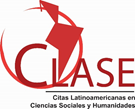La estructuración de las clases con comunidades virtuales en tiempos COVID-19
Resumen
En la actualidad, la estructura de las clases con las comunidades virtuales requiere transformarse en la modalidad mixta o blended-learning en plena interactividad-interacción con el apoyo de recursos telemáticos de la comunicación sincrónica y asincrónica, a través de la realización de varias acciones a trazar en función de su diagnóstico con la dinámica del propio proceso, la colaboración y diálogo entre los participantes en correspondencia con las necesidades de enseñanza y aprendizaje, la toma de decisiones para contribuir a la solución de actividades de carácter valorativo y evaluativo de dos asignaturas constatadas en un estudio desarrollado en la Licenciatura en Educación, Informática (plan de estudios E) a estudiantes que cursan primer y tercer año de las variantes de cuatro y cinco años de la modalidad Curso Encuentro, en la Universidad de Cienfuegos. En tal práctica, se estructura clases encuentro con el método colaborativo-dialógico haciendo uso de Moodle, WhatsApp y Facebook, apoyando en el intercambio de conocimientos, ideas y publicación de tareas desarrolladas por los estudiantes ante las orientaciones indicadas por el profesor. Los resultados se aprecian como positivos, aunque requieren mayor difusión en la pedagogía actual, implicando cambios en el modo tradicional de estructurar las clases respetando la metodología establecida.
Palabras clave:
Estructuración de las clases, modalidad blended-learning, interactividad-interacción, comunidades virtuales, Covid-19.
ABSTRACT
Currently, the structure of classes with virtual communities needs to be transformed into the mixed or blended-learning modality in full interactivity-interaction with the support of telematic resources of synchronous and asynchronous communication, through the performance of various actions to trace according to their diagnosis with the dynamics of the process itself, the collaboration and dialogue between the participants in correspondence with the teaching and learning needs, the decision-making to contribute to the solution of activities of an evaluative and evaluative nature of two verified subjects in a study developed in the Bachelor of Education, Computer Science (study plan E) to students who are in the first and third year of the four- and five-year variants of the Encounter Course modality, at the University of Cienfuegos. In such practice, meeting classes are structured with the collaborative-dialogical method using Moodle, WhatsApp and Facebook, supporting the exchange of knowledge, ideas and publication of tasks developed by the students before the guidelines indicated by the teacher. The results are seen as positive, although they require greater diffusion in current pedagogy, implying changes in the traditional way of structuring classes respecting the established methodology.Keywords:
Structuring of classes, blended-learning modality, interactivity-interaction, virtual communities, Covid-19.Descargas
Publicado
Cómo citar
Número
Sección
Licencia
La editorial "Universo Sur", de la Universidad de Cienfuegos, publica el contenido de la Revista "Universidad y Sociedad" bajo una Licencia Creative Commons Atribución-NoComercial-SinDerivar 4.0 Internacional.
© Podrá reproducirse, de forma parcial o total, el contenido de esta publicación, siempre que se haga de forma literal y se mencione la fuente.









